September 2021

September 2021
Korea’s major holidays reflect the nation’s cultural heritage, a legacy that includes Confucianism. Nestled in the mountains of northern Gyeongsangbuk-do Province, the city of Mungyeong has preserved many aspects of old Korea’s Confucian culture, providing visitors insight into the practices, traditions and values that inform the nation’s holidays of today. It’s also a beautiful place in its own right, making it an ideal holiday destination.
Written by
Robert Koehler,
contributing writer
Photographed by
Studio Kenn
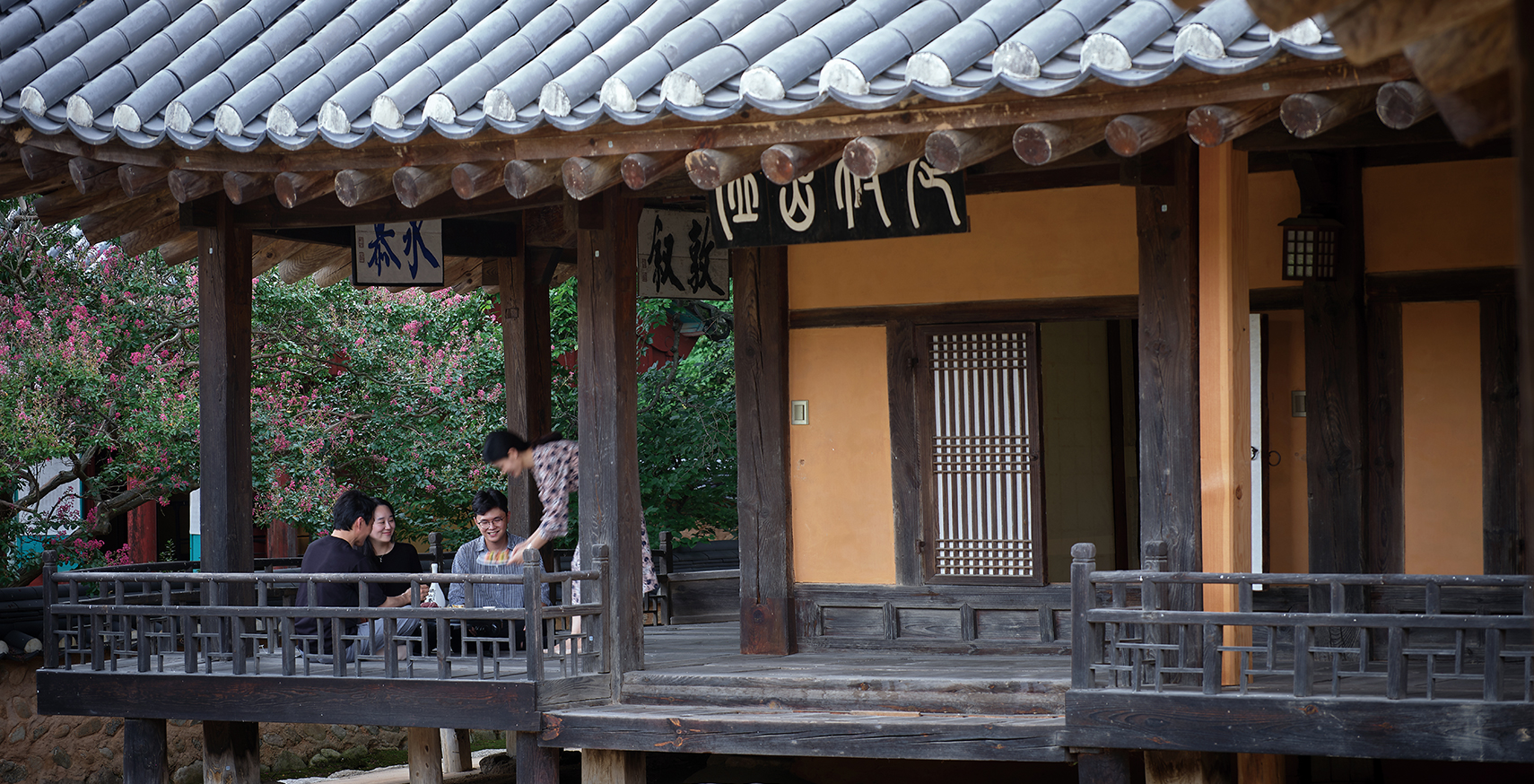
Strategically located at the southern end of a major pass through the Sobaeksan Mountains, Mungyeong has long been the gateway linking the Korean southwest with the Seoul region.
In old Korea, merchants, official convoys and scholars from Confucian centers such as nearby Andong would pass through Mungyeong’s vital Saejae Pass on their way to the royal capital of Hanyang (today’s Seoul) to take the critical civil service exam.
With the advent of highways and bullet trains, the passes are no longer the vital transportation routes they once were. That doesn’t stop thousands of people from returning to Mungyeong from Seoul, Daegu and other major cities on major holidays to spend time with family.
Like other cities and towns in rural northern Gyeongsangbuk-do such as Andong, Yecheon and Yeongju, Mungyeong preserves Confucian traditions passed on through the centuries. That means come holiday time, many families perform the Confucian ancestral rite, scrupulously following rules and etiquette handed down through the traditions. Crowds descend on Mungyeong Central Market and other traditional markets to purchase the foods and other items the rites require, elevating the holiday atmosphere.
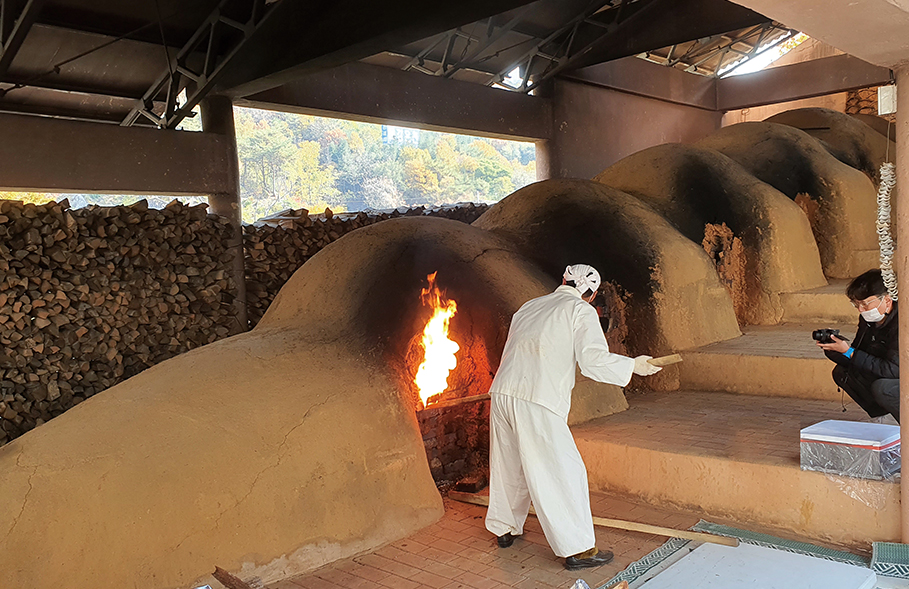 © Mungyeong Foundation for Culture and Tourism
© Mungyeong Foundation for Culture and Tourism
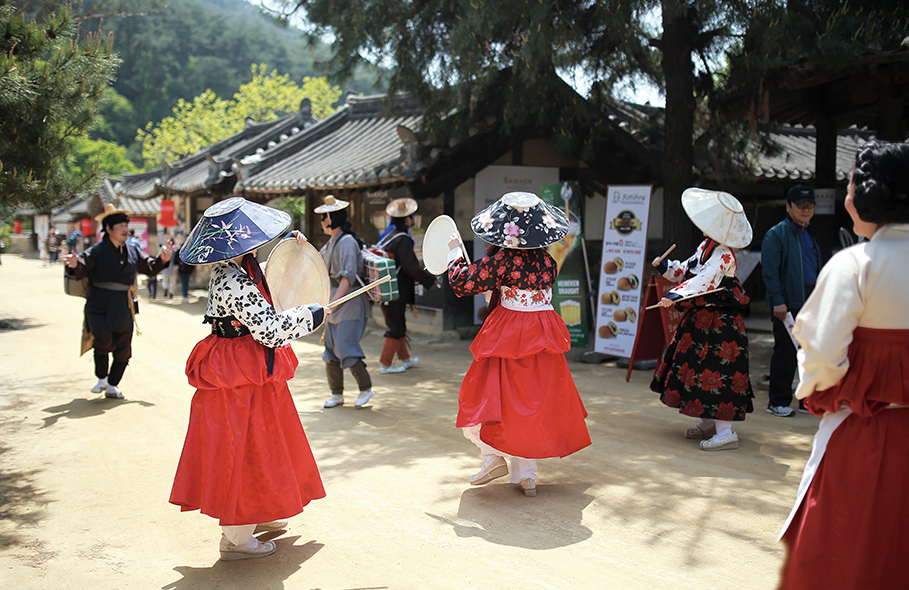 Mungyeong hosts events and festivals each season, though many have gone online since the start of the COVID-19 pandemic. © Mungyeong Foundation for Culture and Tourism
Mungyeong hosts events and festivals each season, though many have gone online since the start of the COVID-19 pandemic. © Mungyeong Foundation for Culture and Tourism
The Head House of the Jangsu Hwang Clan is a good place to experience Korea’s holiday traditions and the Confucian spirit behind them.
The complex of tile roofed buildings is the ancestral home of the Sajeonggong branch of the Jangsu Hwang clan, one of Korea’s most illustrious families. One member of the family, Hwang Hui, even served as Chief State Minister under King Sejong the Great.
On major holidays, clan members from all over the country gather to perform Confucian memorial rites, though during the COVID-19 pandemic, the estate’s managers have been conducting the rites on their own.
Traditionally, men perform the rites, while women prepare the sacrificial food and drink. For major rites, so much food is needed that preparation begins three days in advance, all under the guidance of the jongbu―the wife of the eldest direct male descendant of the clan’s founder. In particular, the family prepares hosanchun―a rice wine brewed from rice, glutinous rice, pine needles, nuruk and water―as an offering to the ancestors. Hwang Hui reportedly enjoyed the beverage, and the jongbu of the Hwang clan have kept the artisanal craft alive for centuries. Today, Hwang Soo-sang, the 23rd direct male descendant of Hwang Hui, brews the drink at a modern facility near the Head House.
The clan also holds memorial rites here at least once a month, including a rite for Hwang Hui on the 15th day of the second lunar month.
Typical of Confucian architecture, the estate’s buildings possess a restrained, rustic charm, their unpainted surfaces and natural wood lines reflecting the Confucian scholar’s modesty and love of nature.
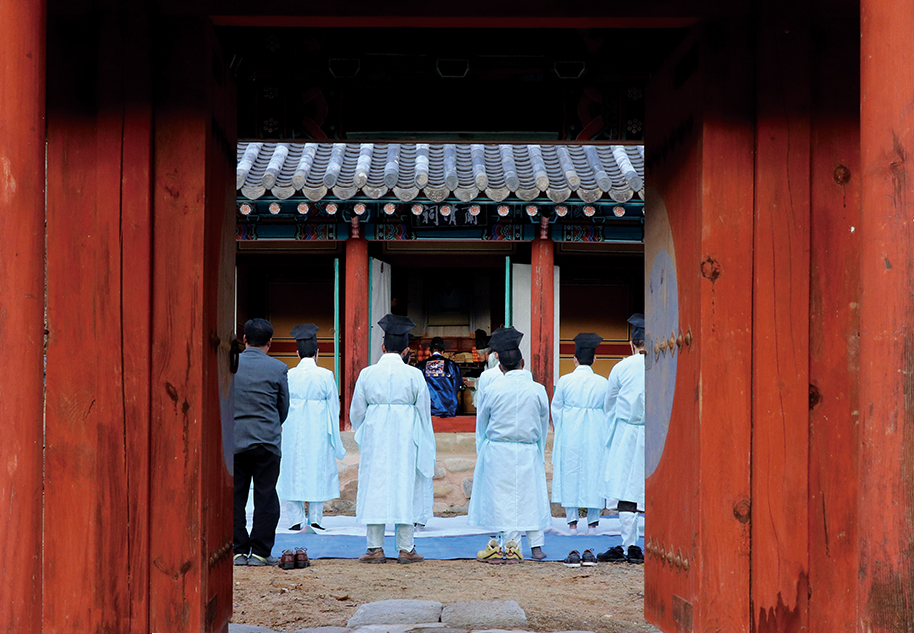 Members of the Hwang family carry out a traditional memorial rite. © Hwang Soo-sang
Members of the Hwang family carry out a traditional memorial rite. © Hwang Soo-sang
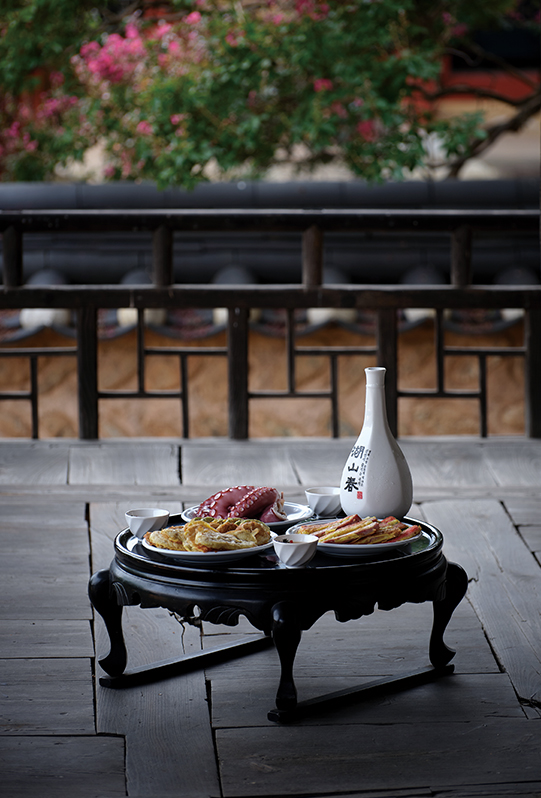 After the memorial rite, participants eat the food offered in sacrifice to the ancestors.
After the memorial rite, participants eat the food offered in sacrifice to the ancestors.
Though the current complex was built in the 1700s, the scholar Hwang Si-gan (1558-1642) reportedly lived here, suggesting the estate is much older.
In the estate’s courtyard stand two trifoliate orange trees that are over 400 years old, reportedly planted by Hwang Si-gan. The Korean government has designated the courtyard one of Korea’s most beautiful private gardens.
A shrine dedicated to Hwang Hui stands in the rear of the complex, its entrance marked by a blue and red taegeuk, the Confucian symbol that represents cosmic balance. Unlike the other buildings, the shrine is brightly painted, a reflection of its importance and official status.
The shrine area includes a hall containing Hwang Hui’s personal relics, including an inkstone and hat tie.
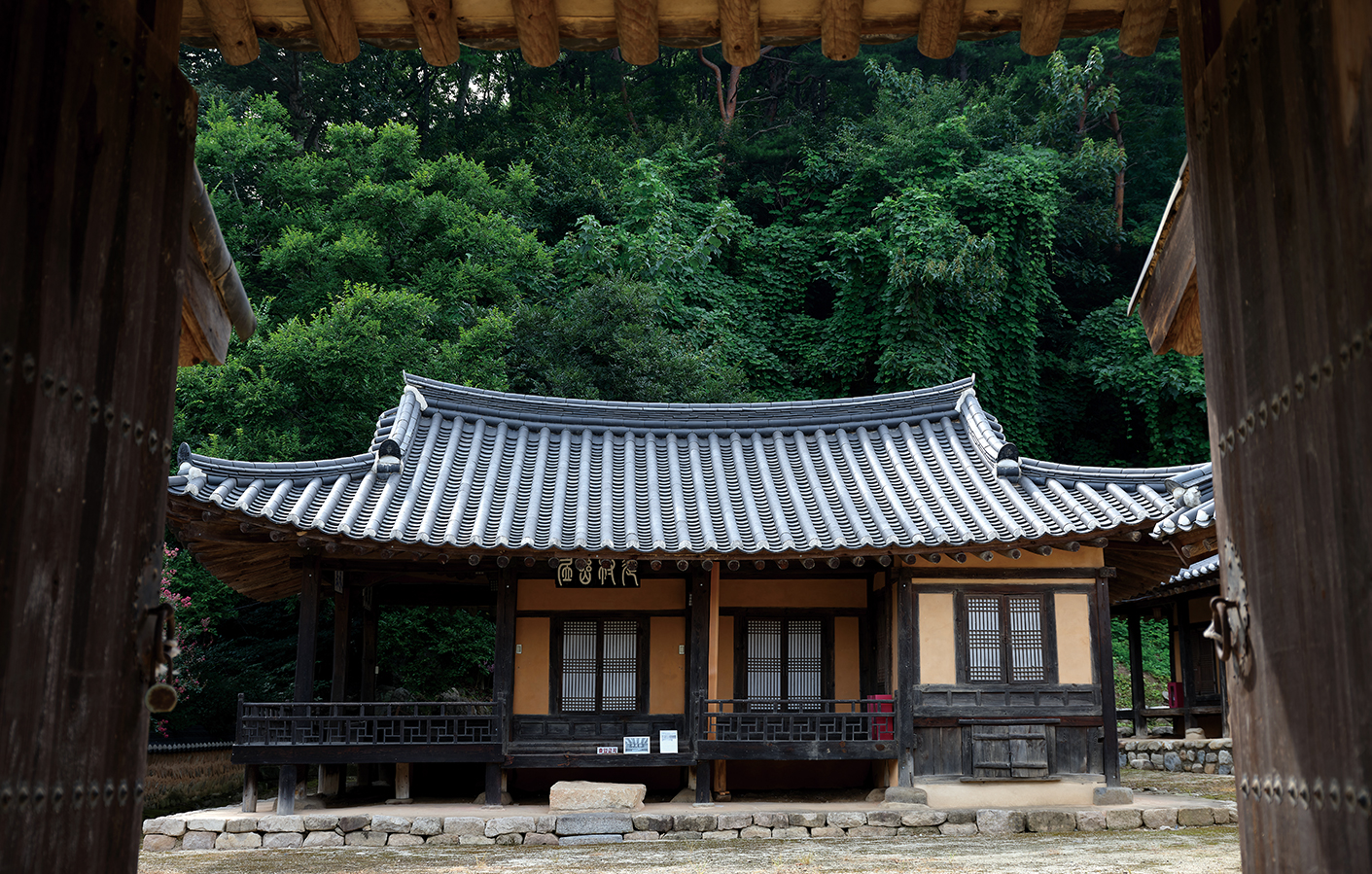 View of The Head House of the Jangsu Hwang Clan.
View of The Head House of the Jangsu Hwang Clan.
Mungyeong’s chief claim to fame is the Saejae Pass. In the days before roads and railways, the pass was one of only a handful of ways through the Sobaeksan Mountains, which divide Yeongnam―Korea’s southeast―from the central region, including Seoul.
It was also a vital link on the Great Yeongnam Road, the Joseon era trunk road connecting Hanyang and Dongnae, today’s Busan. In fact, the pass is one of the few surviving stretches of the once-critical transportation route, which has largely disappeared.
In the days of old, the road would have carried Koreans back to their ancestral hometowns on holidays to perform the traditional rites, like the highways of today. In a way, they symbolize one of the most important aspects of Korea’s holiday season: gwihyang, or returning home.
The royal government fortified the pass in the 18th century, erecting three imposing gates to protect the route and control traffic. The gates still stand today, an impressive sight against the towering peaks that flank the road.
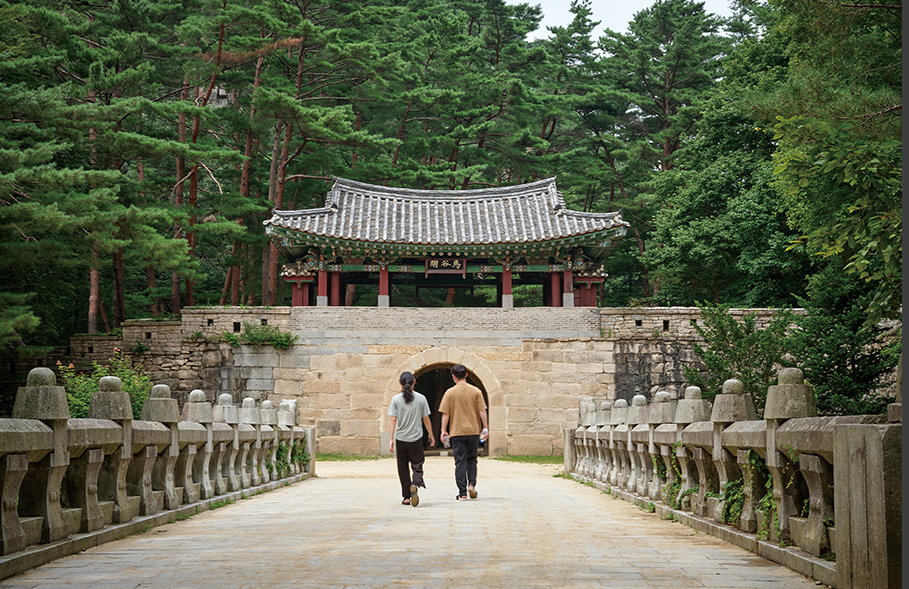 Mungyeong’s Saejae Pass was the most important passageway
Mungyeong’s Saejae Pass was the most important passageway
on the way from southeastern Korea to Seoul.
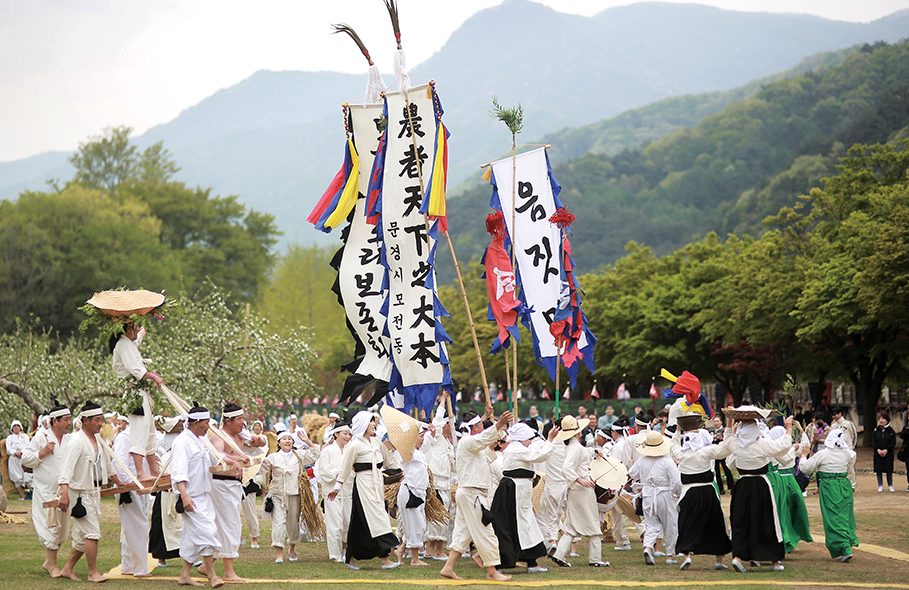 The Mojeon Deulsori Preservation Society preserves the traditional percussion music of Mungyeong’s Mojeon-dong district. In the old days, rural percussion music would spice up the holidays. © Mungyeong Foundation for Culture and Tourism
The Mojeon Deulsori Preservation Society preserves the traditional percussion music of Mungyeong’s Mojeon-dong district. In the old days, rural percussion music would spice up the holidays. © Mungyeong Foundation for Culture and Tourism